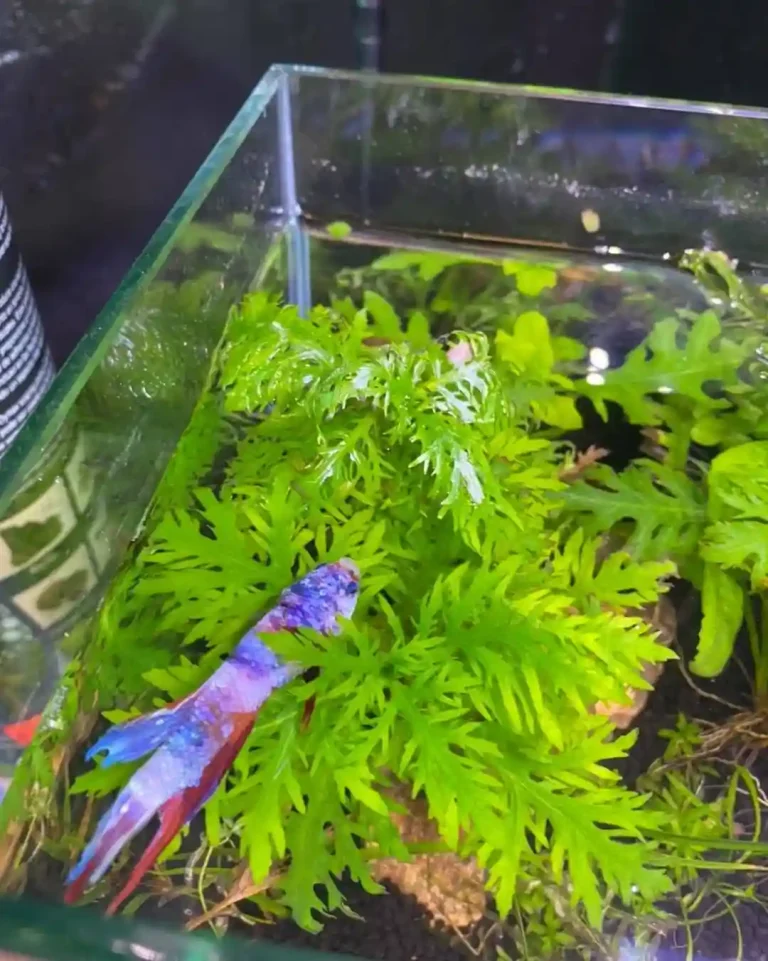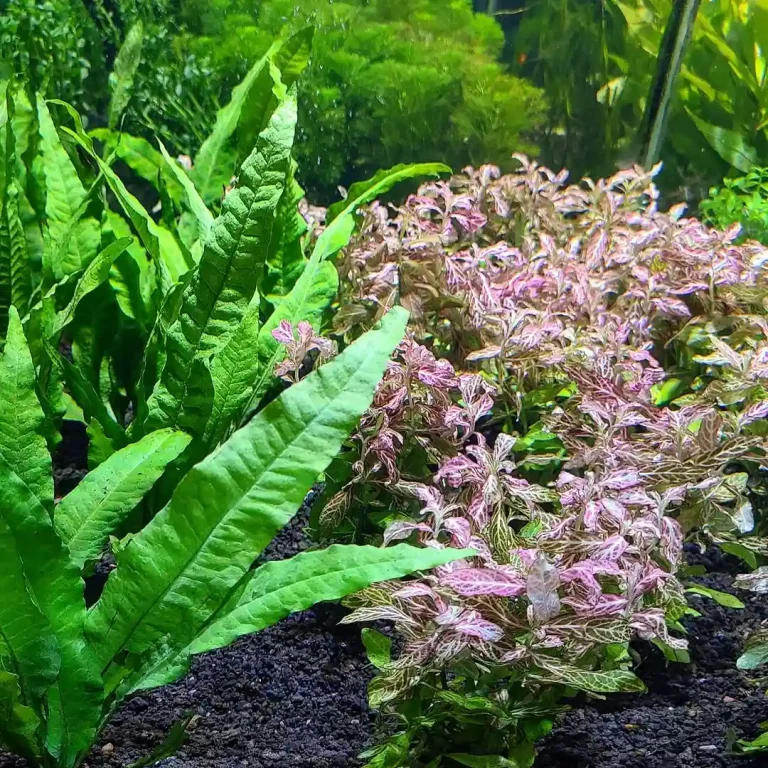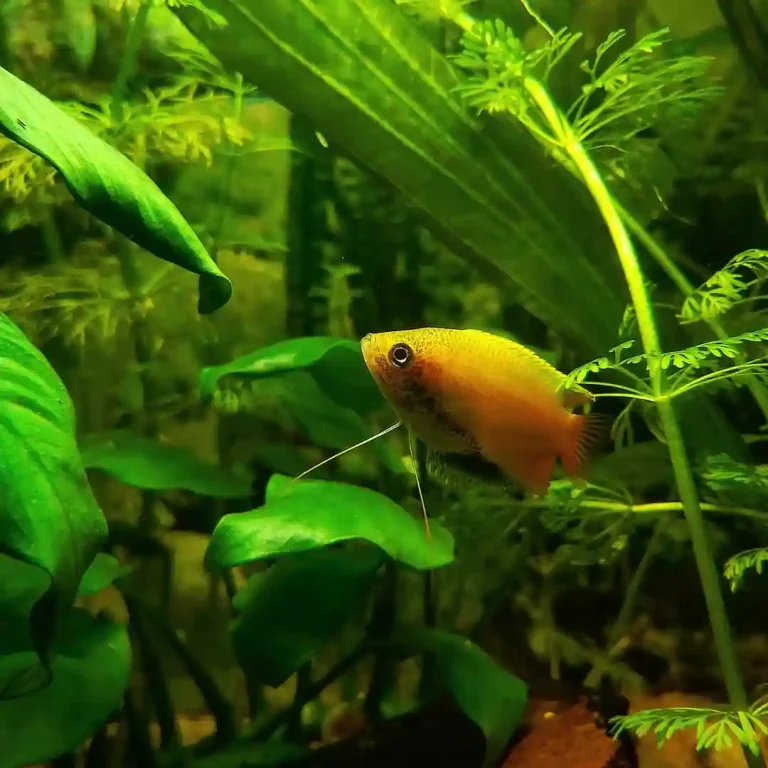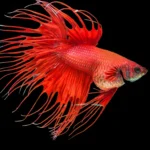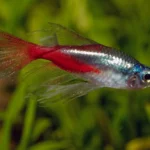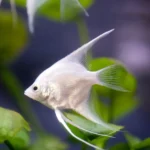Starting a planted aquarium doesn’t have to be complicated. If you’re new to the hobby or don’t have bright lighting systems, low-light plants are your best friends. These hardy species can thrive with minimal light and care, making them perfect for beginners looking to add some greenery to their tanks.
In this guide, we’ll explore ten low-light aquarium plants that are not only beautiful but also incredibly forgiving. Whether you have a betta tank, community aquarium, or are just starting your first planted setup, these plants will help you create a lush underwater garden without breaking the bank or requiring complex equipment.

Why Choose Low-Light Plants?
Before diving into our list, let’s understand why low-light plants are ideal for beginners:
- Lower equipment costs – No need for expensive lighting systems
- Reduced algae problems – Less light means fewer algae issues
- Less maintenance – Slower growth equals less frequent pruning
- Greater forgiveness – These plants can withstand beginner mistakes
Now, let’s explore the ten best low-light aquarium plants that will thrive in your beginner setup!
1. Marimo Moss Ball
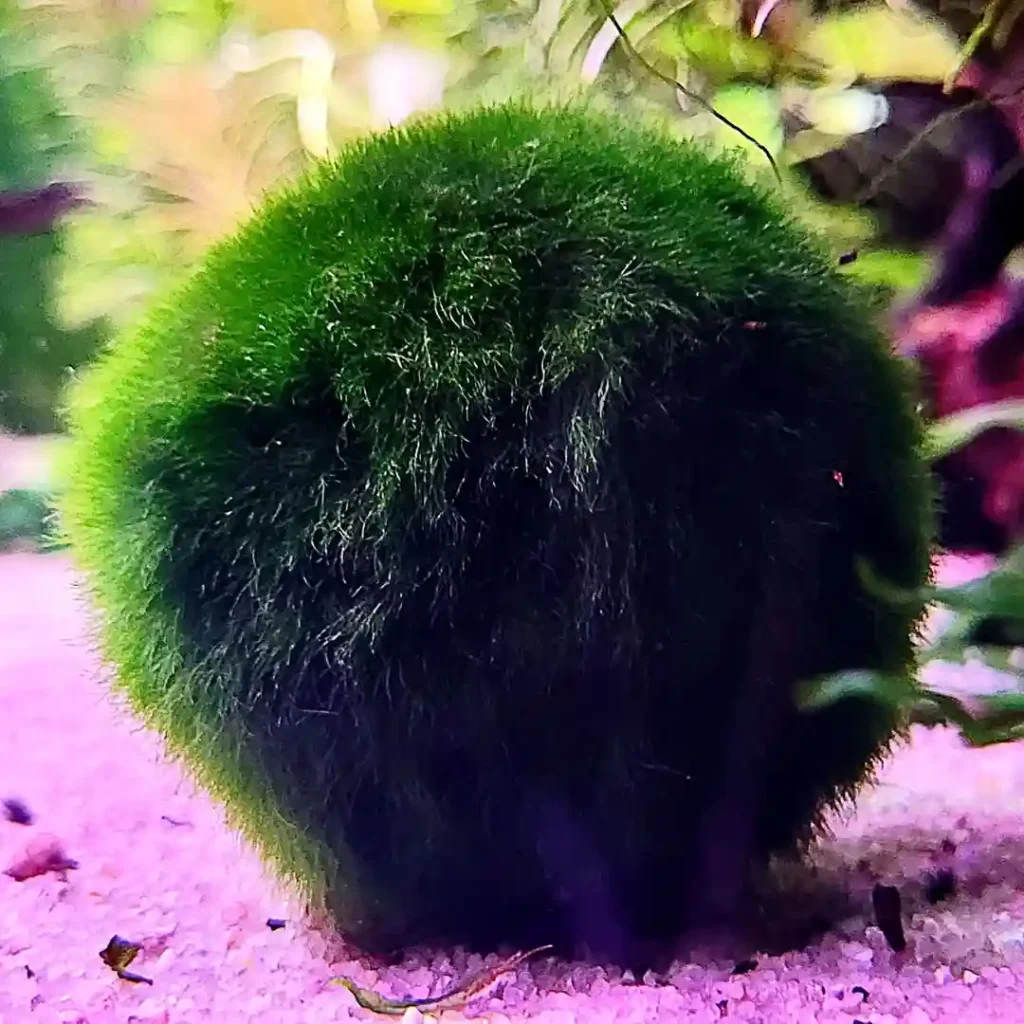
Difficulty Level: ★☆☆☆☆ (Easiest)
Marimo moss balls aren’t actually moss or even plants in the traditional sense—they’re naturally occurring balls of cladophora algae. This unique “plant” requires almost no care and thrives in virtually any aquarium setup.
Care Tips:
- Roll them gently during water changes to maintain their round shape
- No special substrate or fertilizer needed
- Perfect for small tanks, betta bowls, or goldfish aquariums
- Can be unrolled and wrapped around driftwood to create miniature trees
Why It’s Great for Beginners: Marimo moss balls are practically indestructible. They add a unique aesthetic to your tank and require almost no maintenance beyond the occasional rolling.
2. Java Fern
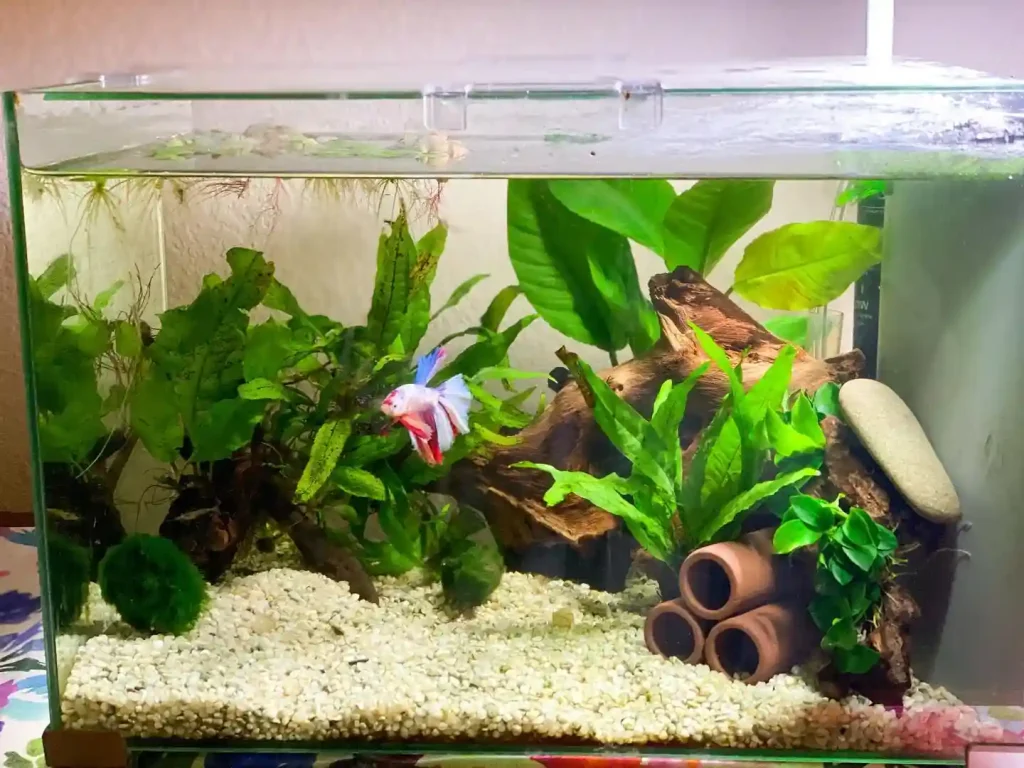
Difficulty Level: ★☆☆☆☆ (Very Easy)
Java fern has become a staple in the aquarium hobby for good reason. Its long, pointed leaves with deeply ridged veins create a striking appearance while being incredibly durable.
Care Tips:
- Never plant the rhizome (horizontal stem) in the substrate
- Attach to rocks or driftwood using thread or super glue gel
- Absorbs nutrients from the water column, so liquid fertilizers help
- Available in several varieties including narrow leaf, Windelov (lace), and trident
Why It’s Great for Beginners: Java fern is nearly impossible to kill and doesn’t need to be planted in substrate. It’s one of the few plants that fish known for eating plants (like goldfish) will usually leave alone.
3. Anubias
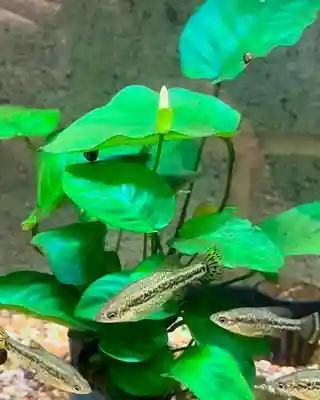
Difficulty Level: ★☆☆☆☆ (Very Easy)
While not listed in your attached document, Anubias is another essential low-light plant worth including. Like Java Fern, Anubias has a rhizome that shouldn’t be buried, making it perfect for attaching to hardscape.
Care Tips:
- Keep the rhizome above the substrate
- Grows very slowly, requiring minimal maintenance
- Thick, leathery leaves resist damage from plant-eating fish
- Available in many sizes, from tiny Anubias nana ‘Petite’ to larger varieties
Why It’s Great for Beginners: Anubias is virtually indestructible, grows in almost any light condition, and its robust leaves can withstand rough handling from active fish.
4. Cryptocoryne Wendtii
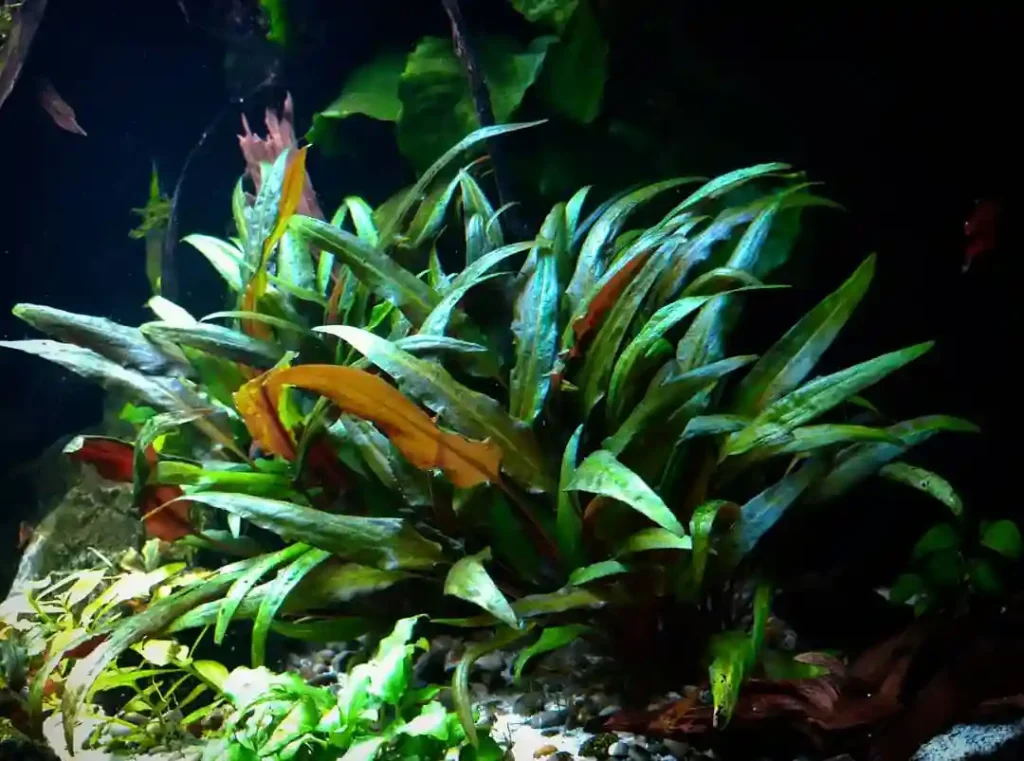
Difficulty Level: ★★☆☆☆ (Easy)
This low-maintenance crypt comes in several varieties including green, brown, tropica, and red. It’s a slow-growing plant that thrives in almost any conditions.
Care Tips:
- Prefers root feeding, so add root tabs every three months for best results
- Don’t panic if leaves melt when first added—this is normal “crypt melt”
- New leaves will grow once it adjusts to your water parameters
- Red varieties benefit from iron supplements
Why It’s Great for Beginners: Cryptocoryne wendtii doesn’t need CO2 injection or special lighting, and it can survive in virtually any aquarium setup. Its ability to bounce back from “crypt melt” makes it forgiving for those still learning.
5. Amazon Sword

Difficulty Level: ★★☆☆☆ (Easy)
This classic aquarium plant is known for its lush growth and ability to become the centerpiece of any tank. While it can grow quite large, it starts at a manageable size for beginners.
Care Tips:
- Root tabs are essential—Amazon swords are heavy root feeders
- Initial emersed-grown leaves will melt back as underwater leaves develop
- Can eventually grow tall enough to reach the water surface
- May produce daughter plants on long stems once mature
Why It’s Great for Beginners: Despite its impressive size potential, Amazon sword is surprisingly undemanding. As long as you provide root tabs, it will forgive most beginner mistakes and provide beautiful greenery.
Related article: 12 Fast Growing Aquatic Plants
6. Bacopa Caroliniana

Difficulty Level: ★★☆☆☆ (Easy)
Bacopa is an excellent entry-level stem plant with round, attractive leaves on straight stems. It’s one of the few stem plants that can thrive in lower light conditions.
Care Tips:
- Benefits from liquid fertilizers like Easy Green
- Grows vertically, creating height in your aquascape
- Easily propagated by cutting the tops and replanting
- Lower leaves may die off—simply trim the tops and replant for fuller growth
Why It’s Great for Beginners: Bacopa is more forgiving than most stem plants, doesn’t require CO2, and provides easy propagation opportunities to fill your tank with more plants.
7. Vallisneria
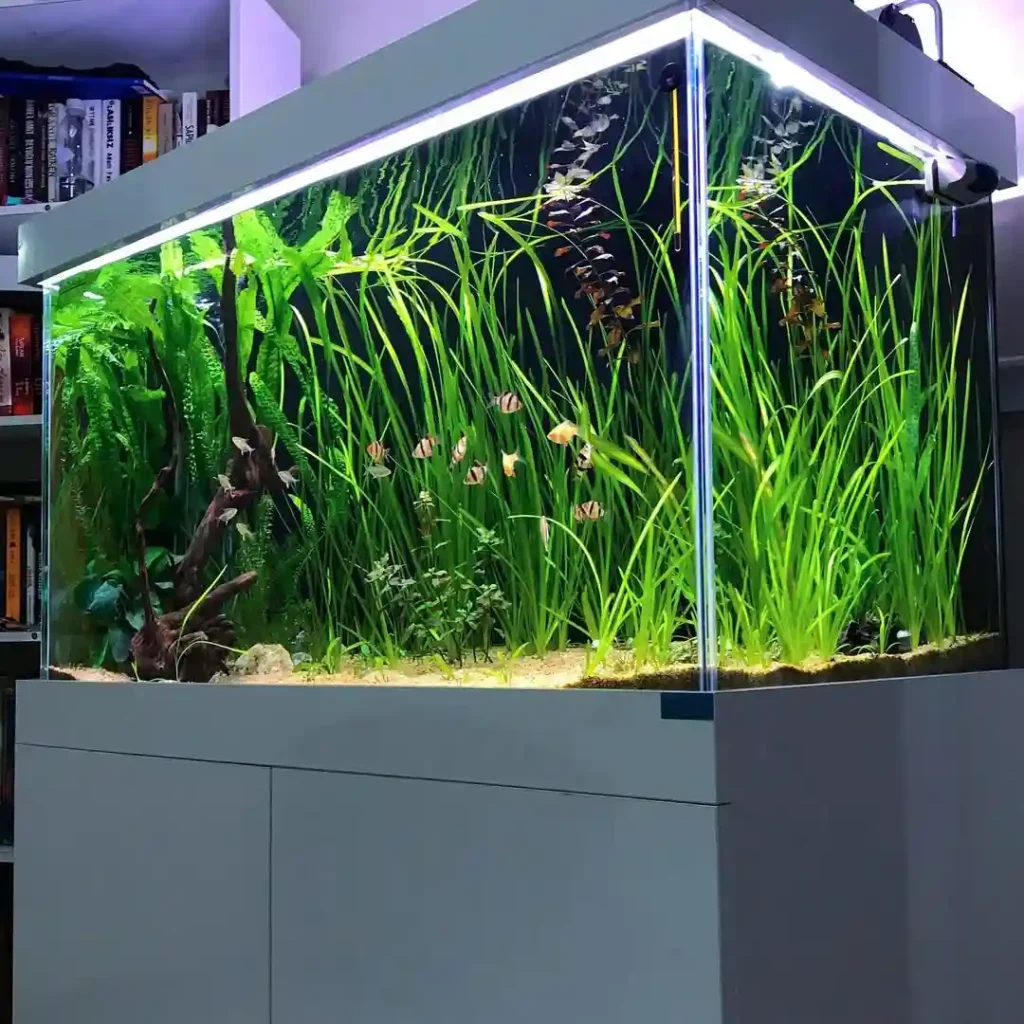
Difficulty Level: ★★☆☆☆ (Easy)
Want an underwater jungle with minimal effort? Vallisneria is your answer. This grass-like plant creates a dramatic background effect as it grows tall and spreads readily.
Care Tips:
- Plant in groups for a more natural look
- Provides excellent cover for shy fish
- Spreads by runners, quickly filling in empty spaces
- Once established, can withstand plant-eating fish like goldfish
Why It’s Great for Beginners: Vallisneria grows quickly, providing visible results that keep beginners motivated. Its ability to spread on its own means your initial investment quickly multiplies.
8. Christmas Moss
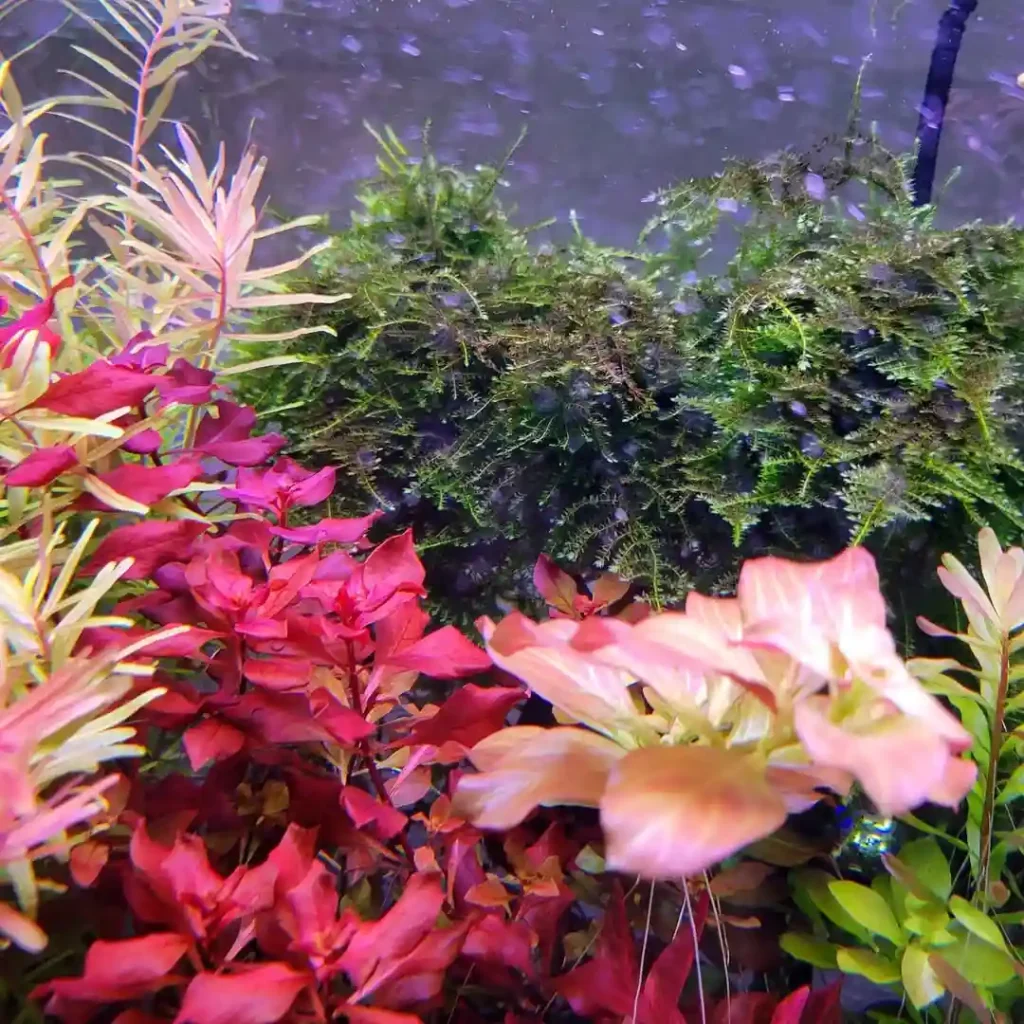
Difficulty Level: ★★☆☆☆ (Easy)
Christmas moss creates fluffy fronds that resemble tiny Christmas trees, adding texture and interest to your aquascape. It’s perfect for creating natural-looking moss-covered surfaces.
Care Tips:
- Tie to rocks or driftwood for best growth
- Provides excellent hiding places for baby fish and shrimp
- Benefits from some liquid fertilizer
- Small algae eaters like amano shrimp help keep it clean
Why It’s Great for Beginners: While it grows slowly, Christmas moss is very hardy and creates beautiful, natural-looking textures without requiring special care. It’s especially valuable in breeding tanks.
9. Cryptocoryne Lutea
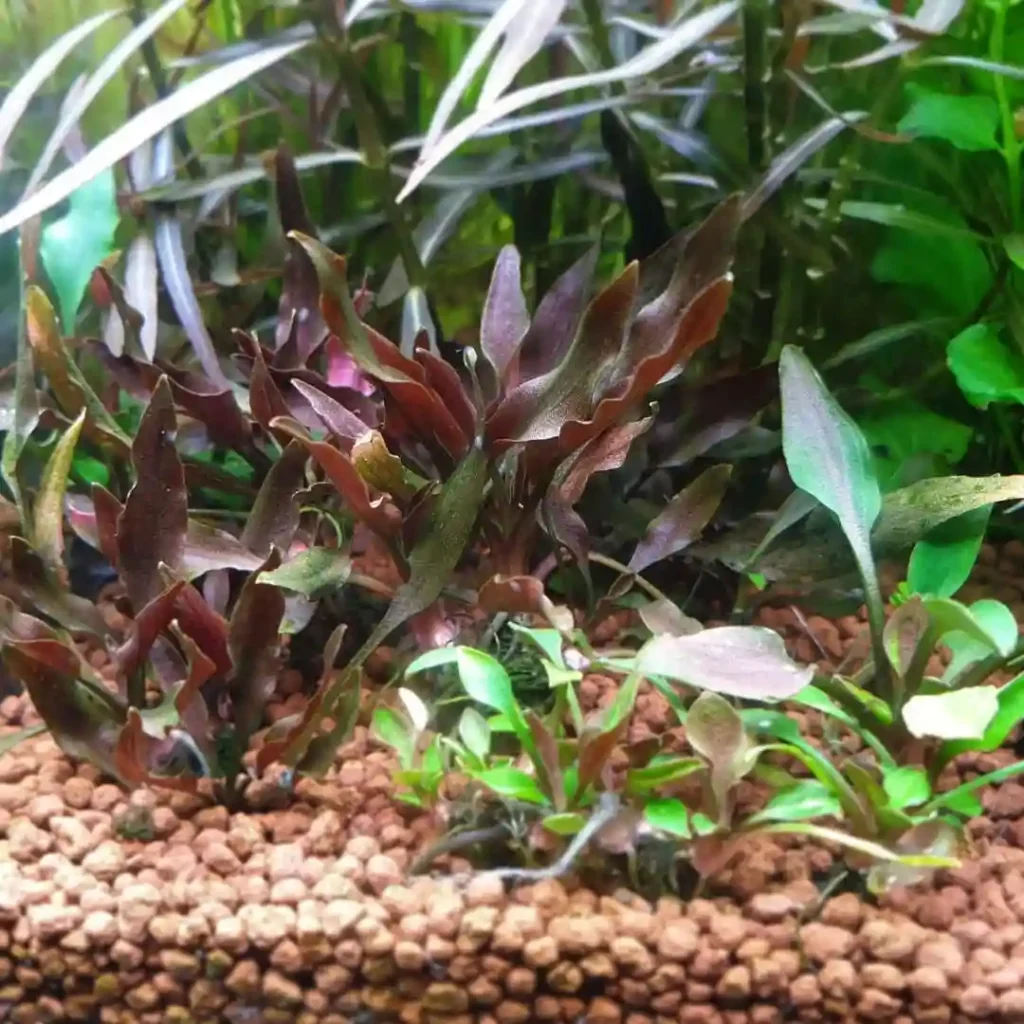
Difficulty Level: ★★☆☆☆ (Easy)
Another excellent cryptocoryne species, C. lutea features slender, bright green leaves that add variety to your aquarium. It’s as undemanding as other crypts but offers a different leaf texture.
Care Tips:
- Works with virtually any substrate and lighting
- No CO2 injection needed
- Grows slowly, requiring minimal maintenance
- Add root tabs every few months for optimal health
Why It’s Great for Beginners: Like its cousin C. wendtii, C. lutea is exceptionally hardy and requires very little care. Its slow growth means less maintenance while still providing beautiful greenery.
10. Aponogeton Crispus
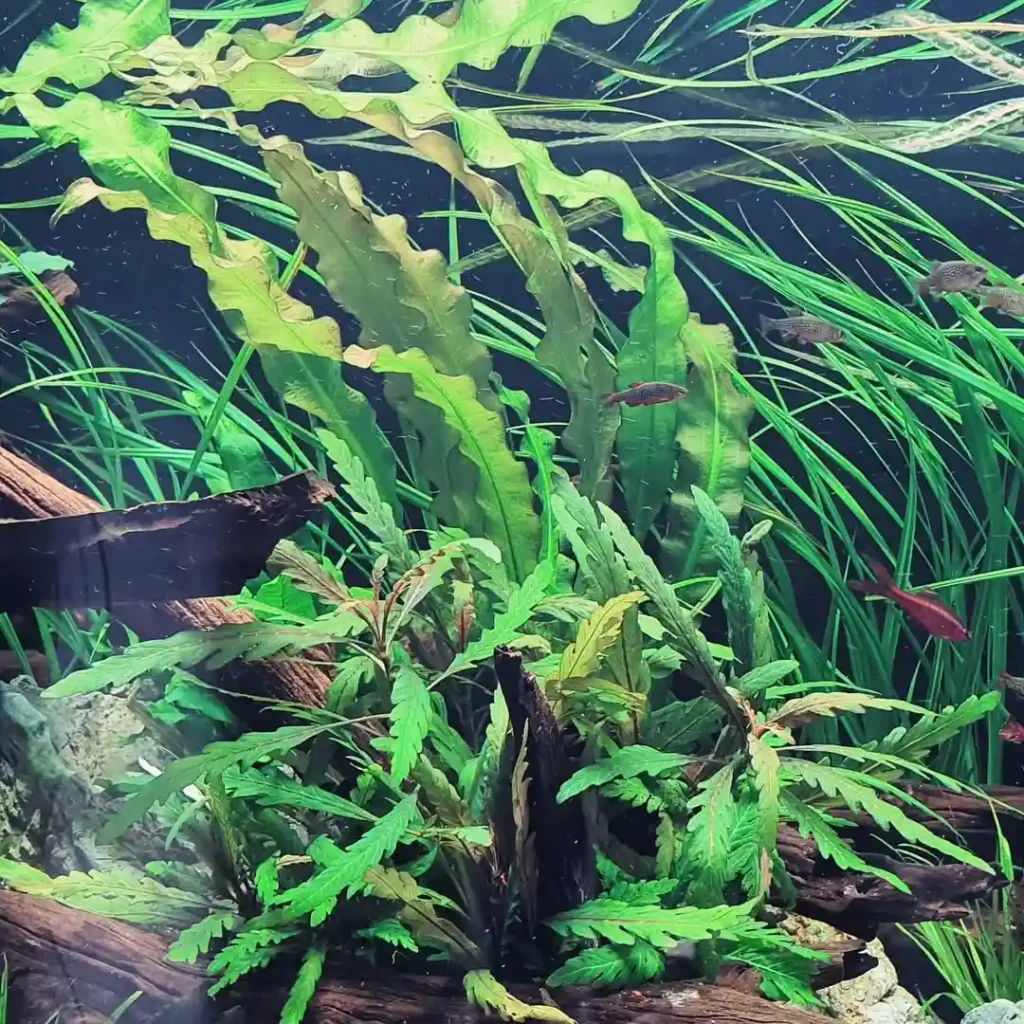
Difficulty Level: ★★☆☆☆ (Easy)
This bulb plant creates long, wavy-edged leaves that flow beautifully in the water current. Often sold as “betta bulbs” in pet stores, they’re incredibly simple to grow.
Care Tips:
- Simply place the bulb on top of the substrate
- May go through dormant periods—don’t remove the plant
- Grows quickly and can reach impressive sizes
- May produce flowering stems that reach above the water
Why It’s Great for Beginners: For just a few dollars, you get a fast-growing plant that creates dramatic, flowing leaves. The bulb stores nutrients, making it resilient even in poor conditions.
Bonus: Dwarf Sagittaria
Difficulty Level: ★★☆☆☆ (Easy)
While technically number 11 on our list, dwarf sagittaria deserves mention as a versatile, grass-like plant that can serve as either a foreground carpet or midground accent depending on your lighting.
Care Tips:
- Under high light, stays short like a carpet
- Under low light, grows taller reaching toward the light
- Spreads by runners throughout the substrate
- Benefits from both root tabs and liquid fertilizers
Why It’s Great for Beginners: Dwarf sag is one of the few carpeting plants that can succeed in lower light, making it perfect for beginners who want that lush, grassy look without high-tech setups.
Tips for Success with Low-Light Plants
Even the easiest plants need some basic care. Here are some tips to help your low-light plants thrive:
Lighting Basics
Low-light doesn’t mean no light! Aim for:
- 6-8 hours of consistent lighting daily
- Avoid direct sunlight (causes algae problems)
- Budget LED lights are usually sufficient for these plants
Fertilization
Most low-light plants grow slowly but still need nutrients:
- Root tabs every 3-4 months for root feeders (Amazon sword, crypts)
- Basic liquid fertilizer once a week for water column feeders (Java fern, Anubias)
- Skip fertilizers for the first month if you have nutrient-rich substrate
Common Problems and Solutions
| Problem | Likely Cause | Solution |
| Yellowing leaves | Nutrient deficiency | Add appropriate fertilizer |
| Melting plants | Adaptation to new water | Be patient, leave planted |
| Brown spots | Too much direct light | Adjust lighting or position |
| Slow/no growth | Insufficient nutrients | Add fertilizer |
| Algae on plants | Too much light or nutrients | Reduce lighting duration |
Setting Up Your First Low-Light Tank
Want to create a beautiful, low-maintenance planted tank? Here’s a simple setup that works:
- Choose the right tank size – 10+ gallons are more stable and easier for beginners
- Add a basic substrate – Regular aquarium gravel works fine with root tabs
- Select a simple filter – Hang-on-back filters work well for most setups
- Install a budget LED light – Many affordable options are available online
- Add your hardscape – Driftwood and rocks create attachment points for certain plants
- Plant your tank – Start with 3-5 species from our list for best results
- Add starter fertilizer – Follow package directions for dosing
Plant Combinations That Work Well Together
For a visually appealing setup, try these combinations:
Jungle Style:
- Background: Vallisneria
- Midground: Cryptocoryne wendtii
- Foreground: Dwarf sagittaria
Nature Aquarium:
- Hardscape: Driftwood with Java fern and Christmas moss
- Midground: Cryptocoryne lutea
- Accent: Marimo moss balls
Low-Maintenance Tank:
- Background: Amazon sword
- Midground: Anubias on rocks
- Foreground: Cryptocoryne wendtii
Final Thoughts
Starting a planted aquarium doesn’t require expensive equipment or expert knowledge. These ten low-light plants give beginners a great chance of success with minimal investment. Begin with just a few species, provide basic care, and enjoy watching your underwater garden grow.
Remember that patience is key—even the easiest plants need time to adjust and establish themselves. Most problems can be solved with simple adjustments to lighting, fertilization, or water quality.
Which of these low-light plants will you try first? Let us know in the comments below!

